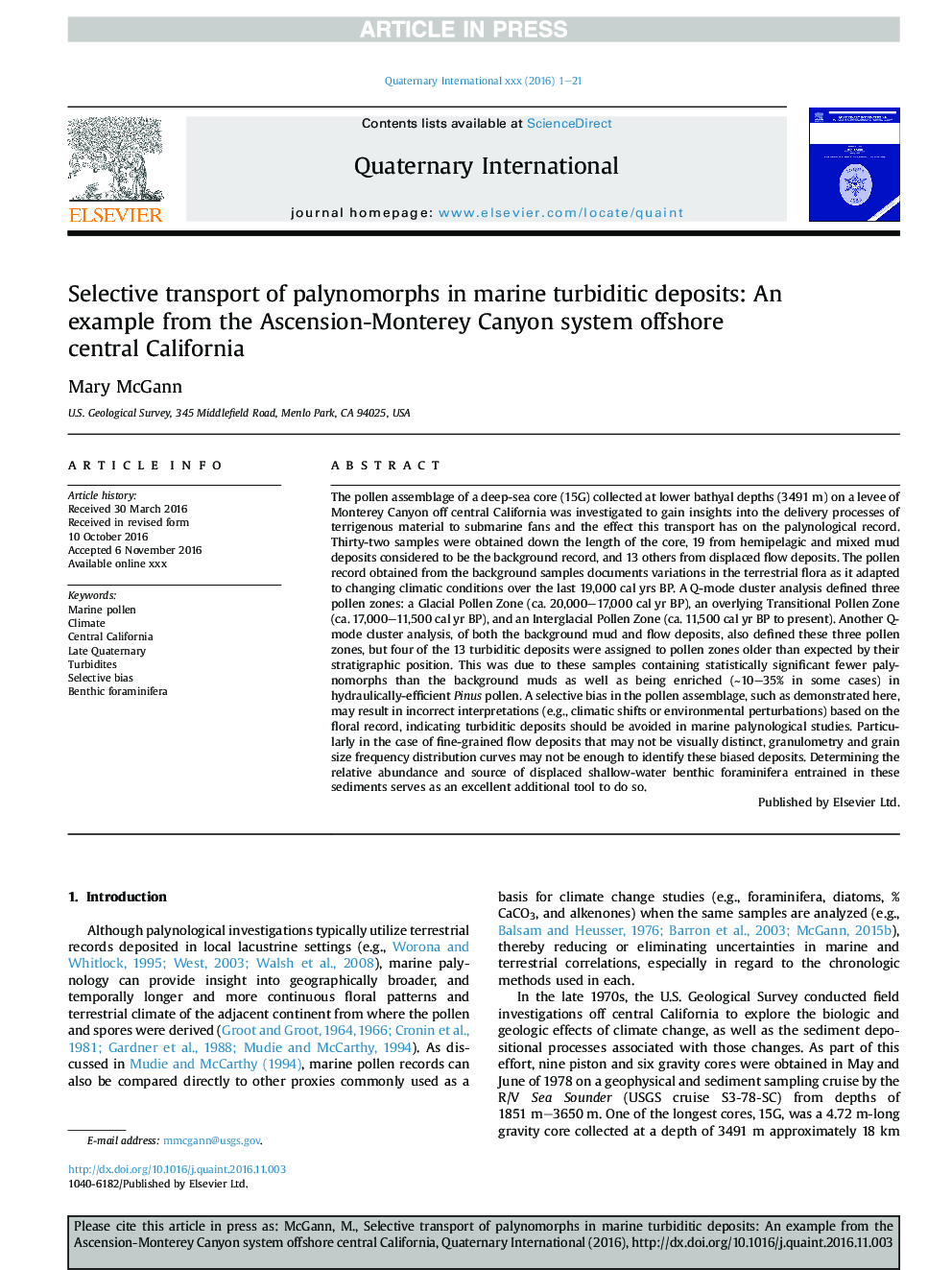| کد مقاله | کد نشریه | سال انتشار | مقاله انگلیسی | نسخه تمام متن |
|---|---|---|---|---|
| 7450290 | 1484047 | 2018 | 21 صفحه PDF | دانلود رایگان |
عنوان انگلیسی مقاله ISI
Selective transport of palynomorphs in marine turbiditic deposits: An example from the Ascension-Monterey Canyon system offshore central California
ترجمه فارسی عنوان
حمل و نقل انتخابی از پالینومورف ها در رسوبات دریایی دریایی: نمونه ای از سیستم کوهنورد آسکین-مونتری در دریای مرکزی کالیفرنیا
دانلود مقاله + سفارش ترجمه
دانلود مقاله ISI انگلیسی
رایگان برای ایرانیان
کلمات کلیدی
گرده دریایی، آب و هوا، کالیفرنیا مرکزی، مرحوم کواترنری، توربیدیت، تعصب انتخابی، فورینیمفر بنفش،
موضوعات مرتبط
مهندسی و علوم پایه
علوم زمین و سیارات
زمین شناسی
چکیده انگلیسی
The pollen assemblage of a deep-sea core (15G) collected at lower bathyal depths (3491 m) on a levee of Monterey Canyon off central California was investigated to gain insights into the delivery processes of terrigenous material to submarine fans and the effect this transport has on the palynological record. Thirty-two samples were obtained down the length of the core, 19 from hemipelagic and mixed mud deposits considered to be the background record, and 13 others from displaced flow deposits. The pollen record obtained from the background samples documents variations in the terrestrial flora as it adapted to changing climatic conditions over the last 19,000 cal yrs BP. A Q-mode cluster analysis defined three pollen zones: a Glacial Pollen Zone (ca. 20,000-17,000 cal yr BP), an overlying Transitional Pollen Zone (ca. 17,000-11,500 cal yr BP), and an Interglacial Pollen Zone (ca. 11,500 cal yr BP to present). Another Q-mode cluster analysis, of both the background mud and flow deposits, also defined these three pollen zones, but four of the 13 turbiditic deposits were assigned to pollen zones older than expected by their stratigraphic position. This was due to these samples containing statistically significant fewer palynomorphs than the background muds as well as being enriched (â¼10-35% in some cases) in hydraulically-efficient Pinus pollen. A selective bias in the pollen assemblage, such as demonstrated here, may result in incorrect interpretations (e.g., climatic shifts or environmental perturbations) based on the floral record, indicating turbiditic deposits should be avoided in marine palynological studies. Particularly in the case of fine-grained flow deposits that may not be visually distinct, granulometry and grain size frequency distribution curves may not be enough to identify these biased deposits. Determining the relative abundance and source of displaced shallow-water benthic foraminifera entrained in these sediments serves as an excellent additional tool to do so.
ناشر
Database: Elsevier - ScienceDirect (ساینس دایرکت)
Journal: Quaternary International - Volume 469, Part B, 10 March 2018, Pages 120-140
Journal: Quaternary International - Volume 469, Part B, 10 March 2018, Pages 120-140
نویسندگان
Mary McGann,
